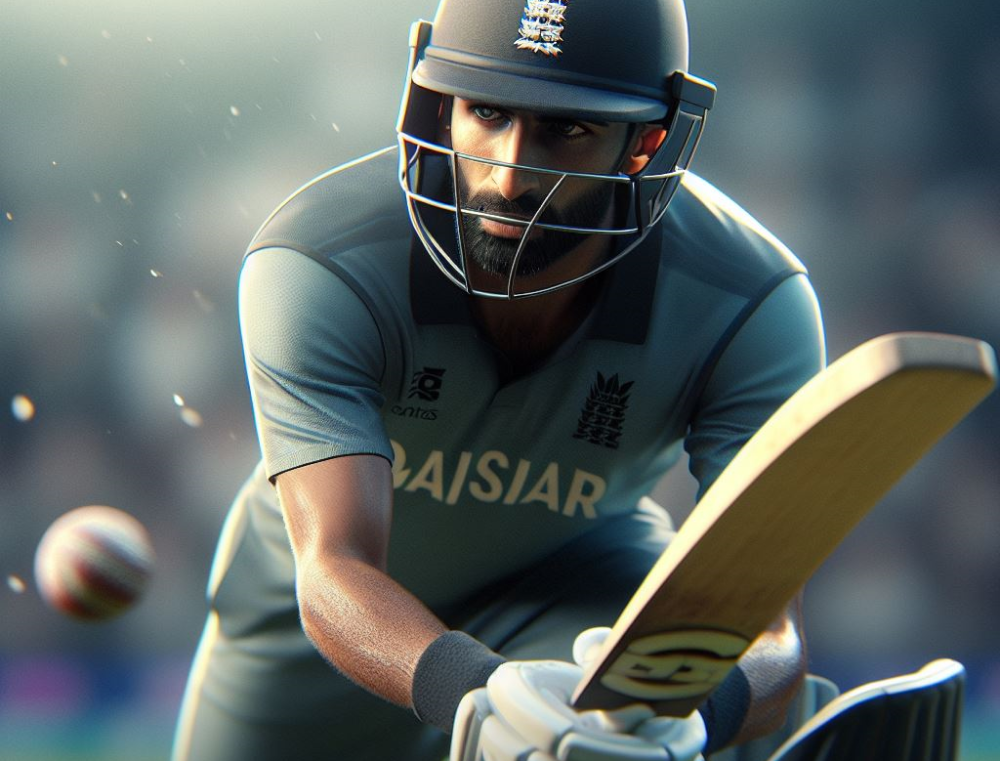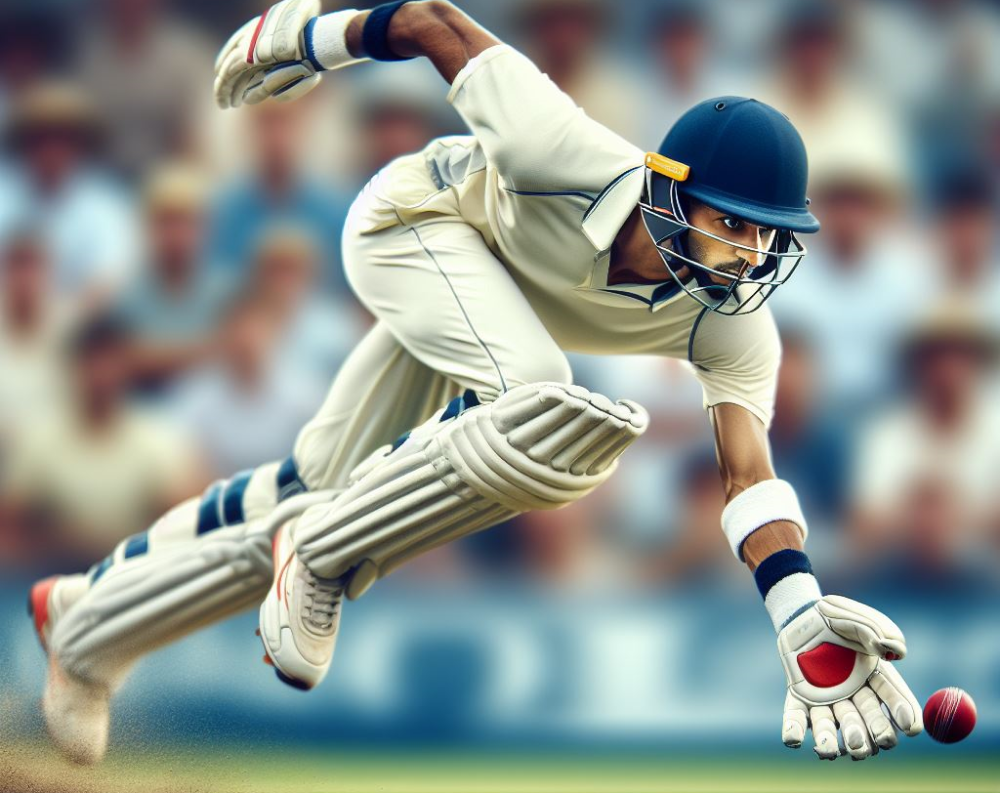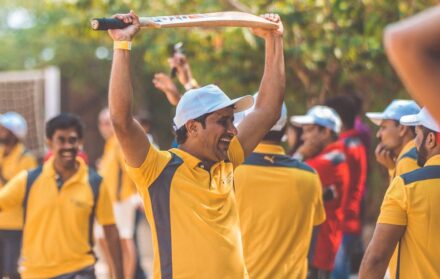
What Techniques Enhance Your Cricket Fielding Skills
Fielding is an integral aspect of the game of cricket, and having strong fielding skills can make a significant difference in the overall performance of a team.
Effective fielding can lead to crucial wickets, save runs, and ultimately impact the outcome of a match. Therefore, it is essential for cricket players to develop and enhance their fielding techniques.
In this article, we will explore various techniques and strategies that can help improve your cricket fielding skills.
This section will delve into the fundamental techniques that every cricketer should master. It will cover proper fielding stance, body positioning, catching techniques, and throwing techniques.
Agility and quick footwork play a vital role in fielding. We will discuss the importance of having a quick reaction time, lateral movement skills, and the ability to anticipate and show flexibility on the field.
Fielding is a team effort, and effective communication and teamwork are crucial for successful fielding. We will explore both verbal and non-verbal communication, as well as the importance of coordination with teammates to achieve optimal fielding performance.
Fielding strategies and positioning can greatly impact the game. We will discuss the importance of understanding the game situation, knowing the strengths and weaknesses of opponents, and positioning oneself correctly for different fielding positions.
Reflexes and quick reactions are key attributes for fielders. We will look at specific drills and exercises that can help improve reflexes and enhance hand-eye coordination, both essential for successful fielding.
Fielding also requires physical fitness and conditioning. We will explore the importance of speed and endurance training, as well as flexibility and strength exercises, to ensure fielders are in top form.
By implementing these techniques and strategies, you can enhance your cricket fielding skills and contribute significantly to your team’s success on the field. Let’s dive into each aspect in detail to help you become an exceptional fielder in the game of cricket.
Importance of Fielding Skills in Cricket

Fielding skills in cricket play a crucial role and are of paramount importance. They contribute significantly to a team’s success and their impact cannot be overstated. A strong fielding unit not only saves runs but also dismisses batsmen, creating immense pressure on the opposition.
In order to excel in fielding, players need to possess quick reflexes, excellent catching abilities, accurate throwing skills, and the ability to anticipate and swiftly react to the game’s dynamics.
Adept fielders, with their agility and acrobatic efforts, possess the capability to completely alter the course of a match.
They are truly an asset to the team, offering support to the bowlers and adding valuable runs through their athleticism.
Basic Techniques for Cricket Fielding
Enhance your cricket fielding skills with the fundamental techniques that form the backbone of a proficient fielder. From mastering the art of a proper fielding stance to perfecting body positioning, and from honing your catching techniques to improving your throwing skills, this section covers it all.
Get ready to dive into the core essentials necessary to excel in the field and elevate your cricket game to new heights.
Proper Fielding Stance
To maximize your fielding skills in cricket, it is crucial to have a proper fielding stance. Here are the steps you can follow to achieve a proper fielding stance:
- Ensure that your feet are shoulder-width apart.
- Slightly bend your knees to maintain balance and flexibility.
- Keep your back straight and evenly distribute your weight on both feet.
- Position your hands in front of you, prepared to react swiftly to the ball.
- Maintain focus on the batsman and anticipate the ball’s direction.
- Be ready to swiftly move in any direction to field the ball.
- Keep a relaxed posture and stay on the balls of your feet for quick movements.
- Regularly practice maintaining your fielding stance in various fielding positions.
Body Positioning
To enhance your cricket fielding skills, proper body positioning is crucial. Body positioning helps in achieving balance, stability, and maximizing reach while fielding. Here are some techniques to improve body positioning:
1. Bend your knees slightly and keep your feet shoulder-width apart to maintain a stable base for body positioning.
2. Stay on the balls of your feet, which allows for quick movement in any direction and enhances body positioning.
3. Keep your back straight and lean slightly forward to react quickly to the ball, contributing to effective body positioning.
4. Position your hands and arms in front of your body to improve reaction time and facilitate clean pickups and throws, enhancing body positioning.
5. Maintain a low center of gravity to generate power and agility while moving, thereby optimizing body positioning.
By mastering these body positioning techniques, you can become a more effective fielder and contribute to your team’s success.
Catching Techniques
To enhance your catching skills in cricket and master the catching techniques, follow these steps:
- Position yourself correctly: Adopt a well-balanced stance by slightly bending your knees and placing your weight on the balls of your feet.
- Maintain focus on the ball: Keep your eyes locked on the ball right from the moment it is released by the bowler until it reaches your hands.
- Apply soft hands: Instead of trying to snatch or grip it tightly, allow the ball to gently come into your hands.
- Position your hands correctly: Create an effective target by forming a “W” shape with your fingers and thumbs.
- Practice proper catching technique: Flex your elbows, absorb the impact by giving with the ball, and securely hold it.
Remember to regularly practice these catching techniques to improve your skills. Best of luck!
Throwing Techniques
To enhance your cricket fielding skills in terms of throwing, it is important to focus on proper Throwing Techniques and accuracy. Here are some key throwing techniques to consider:
- Body alignment: Position your body in line with the target to ensure accuracy and power in your throw.
- Grip: Grip the ball firmly with your fingers spread evenly across the seam for better control.
- Footwork: Use a quick and agile footwork approach towards the target, transferring your weight onto your front foot as you release the ball.
- Arm action: Maintain a smooth and fluid arm motion, keeping your elbow high and releasing the ball over your shoulder.
- Follow-through: Complete your throw with a strong follow-through, extending your arm towards the target and maintaining balance.
By practicing and refining these Throwing Techniques, you can improve your accuracy and effectiveness in cricket fielding.
Agility and Footwork

Developing exceptional cricket fielding skills requires a blend of agility and footwork. In this section, we’ll uncover the secrets behind enhancing your performance in these areas.
From lightning-fast reaction times to fluid lateral movement and the ability to anticipate plays, we’ll explore the key factors that contribute to agility and footwork in the game.
So, tighten those shoelaces, because we’re about to delve into the techniques that can elevate your fielding prowess on the cricket pitch.
Quick Reaction Time
Quick Reaction Time is crucial in cricket fielding as it enables players to swiftly respond to the ball and execute successful catches or stops. There are several techniques that can enhance this skill:
- Mental preparation: To improve your quick reaction time, it is important to remain focused and anticipate the trajectory of the ball.
- Visual acuity: Enhance your ability to quickly locate and track the ball by training your eyes.
- Awareness: It is important to have a clear understanding of the game situation and anticipate where the ball may be hit to enhance your quick reaction time.
- Footwork: Positioning yourself in a way that allows for rapid movements in any direction is essential to maximize your quick reaction time.
- Hand-eye coordination: Engage in practice drills that enhance the coordination between your hands and eyes, ultimately improving your ability to react quickly.
By incorporating these techniques, you can sharpen your quick reaction time, ultimately becoming a more effective fielder. Remember to stay alert, practice regularly, and always be prepared to swiftly react to any ball that comes your way.
Lateral Movement
To improve your cricket fielding skills and enhance your ability to move laterally on the field, there are several key steps you can take:
- Focus on proper footwork: Make sure you maintain a balanced stance, with your feet shoulder-width apart, allowing you to move efficiently in any direction.
- Practice side shuffling: This involves performing quick and controlled lateral movements by shuffling sideways. This helps develop your agility and quickness.
- Master the crossover step: Learn the technique of crossing one foot over the other to efficiently change direction. This allows you to quickly respond to different situations on the field.
- Incorporate change of direction drills: These drills simulate game scenarios and require sudden lateral movements. They help improve your ability to react quickly and move laterally during a match.
- Utilize speed ladder exercises: By incorporating ladder drills into your training routine, you can improve your foot speed, coordination, and overall lateral agility. These exercises are highly effective in enhancing your ability to move laterally on the field.
- Perform plyometric exercises: Engage in exercises such as lateral jumps and lateral bounds to enhance your explosive lateral power. This will give you an edge in quick lateral movements during fielding.
- Strengthen your core and hip muscles: In order to maintain stability and power during lateral movements, it is crucial to have a strong core and hip muscles. Incorporate exercises that target these areas into your training routine.
By following these steps and incorporating them into your training routine, you can significantly improve your lateral movement on the cricket field.
Anticipation and Flexibility
Anticipation and flexibility are essential traits for a fielder in the game of cricket. In order to enhance these skills, players should consider the following:
Reading the batsman: By observing the batsman’s stance and body language, fielders can anticipate the direction and power of the shot.
Moving quickly: Fielders can react swiftly and change direction thanks to their flexibility. Regular stretching and agility drills are effective for improving flexibility.
Positioning: Fielders should anticipate where the ball will be hit and adjust their positioning accordingly. They must be prepared to quickly move in any direction.
Diving: Flexibility allows fielders to make diving stops or take remarkable catches. Regular core exercises and flexibility training can improve their diving ability.
Communication: In order to avoid collisions and ensure effective teamwork, fielders should anticipate where other fielders will be and communicate accordingly.
Communication and Teamwork

Effective communication and seamless teamwork are the driving forces behind successful cricket fielding. In this section, we’ll uncover the crucial role of communication and teamwork in enhancing your fielding skills.
From verbal and non-verbal cues to the perfect coordination with your teammates, we’ll explore how these elements can elevate your performance on the field.
Get ready to discover the secrets that can turn an ordinary fielder into an extraordinary one.
Verbal and Non-Verbal Communication
Verbal and non-verbal communication are essential components in enhancing cricket fielding skills. These forms of communication play a crucial role in ensuring smooth coordination among teammates on the field.
Verbal communication is particularly important in conveying vital information such as calling for catches or indicating fielding positions.
On the other hand, non-verbal communication, conveyed through gestures and signals, allows for quick understanding without disrupting the flow of the game.
Both verbal and non-verbal communication enable fielders to react swiftly and make split-second decisions.
Engaging in practice drills that focus on improving communication skills can enhance fielders’ ability to work as a cohesive unit and anticipate each other’s actions, ultimately leading to an enhanced fielding performance.
Coordination with Teammates
- Coordination with teammates is essential to ensure successful cricket fielding. Here are some steps to enhance teamwork on the field:
- Develop a clear communication system with your teammates, using both verbal and non-verbal cues.
- Coordinate positioning with fielders to cover gaps and guarantee proper field coverage.
- Practice timed throws and relay techniques to execute efficient fielding maneuvers.
- Support and encourage each other during challenging situations to boost morale.
- Continuously communicate and adjust strategies according to the game situation.
Pro-tip: Always be aware of your teammates’ movements and be ready to provide immediate assistance when needed. This will enhance coordination and result in improved fielding performance.
Fielding Strategies and Positioning

When it comes to fielding in cricket, having the right strategies and positioning can make all the difference. In this section, we’ll dive into the game situation, discovering how it impacts fielding choices.
We’ll also uncover the secrets of understanding opponents’ strengths and weaknesses, giving you the upper hand.
And of course, we’ll explore the art of positioning yourself for different fielding positions, so you can be in the right place at the right time. Get ready to take your fielding skills to the next level!
Understanding the Game Situation
Understanding the game situation is absolutely crucial for enhancing cricket fielding skills. It is imperative to have a deep knowledge of the game, analyze the current score, as well as recognize the strengths and weaknesses of the opponents. Identifying the areas to target is also essential.
This kind of information greatly aids in positioning fielders strategically and adjusting fielding positions based on the batting team’s strategy.
Moreover, it enables quick decision-making on the field. Being able to understand the game situation allows fielders to anticipate the batsman’s shots, react swiftly, and be better prepared to make successful catches, stops, or run-outs.
This knowledge also promotes effective communication among fielders, ensuring a coordinated and efficient fielding effort.
Knowing the Strengths and Weaknesses of Opponents
To improve your cricket fielding abilities, it is vital to possess a comprehensive understanding of your opponents’ strengths and weaknesses.
This knowledge will enable you to anticipate their actions and adjust your positioning accordingly. Here are some techniques that can assist you in gaining insights into your opponents:
- Analyze their batting and bowling styles to identify their strengths and weaknesses.
- Observe their fielding positions and strategies to comprehend their defensive and offensive tactics.
- Study their previous matches and performances to identify patterns and areas of vulnerability.
- Pay attention to their body language and on-field communication to assess their confidence levels and team dynamics.
- Utilize scouting reports or information from teammates who have competed against them previously.
By possessing knowledge of your opponents’ strengths and weaknesses, you can strategically position yourself, predict their shots or movements, and make well-informed decisions to enhance your fielding performance. Stay alert and observe diligently throughout the game to continually adapt your tactics and exploit any weaknesses you discover.
Positioning for Different Fielding Positions
Different fielding positions require specific skills and have distinct responsibilities on the cricket field. Positioning for different fielding positions is crucial.
- Slip fielders need quick reflexes and good catching techniques to catch edges of the bat.
- Wicket-keepers must possess fast reflexes and excellent hand-eye coordination to catch balls and effect dismissals.
- Players positioned at long off/long on must have good stamina and a strong throwing arm to field balls hit straight and deep.
- Cover point fielders require agility and quick reaction time to field balls hit between point and mid-off.
- Mid-wicket fielders need lateral movement and anticipation to field balls hit towards the leg side.
Remember, proper positioning enhances fielding effectiveness and increases the chances of success.
Reflex and Reaction Training

Reflex and reaction training is the key to enhancing your cricket fielding skills. Discover specific drills and exercises that will sharpen your abilities, along with effective hand-eye coordination training techniques.
Unleash your potential on the field with these proven methods that guarantee improved agility and responsiveness.
Get ready to take your cricket fielding to the next level as we delve into the world of reflex and reaction training.
Specific Drills and Exercises
To improve your performance in cricket fielding, it is crucial to incorporate specific drills and exercises. Here are some steps you can follow:
- Reaction Time Training: To enhance your reflexes and reaction time, engage in practice drills that involve catching tennis balls thrown at various angles.
- Hand-Eye Coordination: Improve your coordination between your hands and eyes by participating in drills such as juggling multiple balls or playing handball.
- Footwork Drills: Enhance your footwork and speed on the field by performing ladder drills or agility exercises.
- Strength Training: Build core strength and stability, which play a vital role in fielding movements, by incorporating exercises like push-ups, planks, and lunges.
- Plyometric Training: Develop power in your jumps and dives while fielding through explosive exercises like box jumps or squat jumps.
Hand-Eye Coordination Training
- Begin with easy exercises for hand-eye coordination, like juggling or playing catch, as part of Hand-Eye Coordination Training.
- Utilize a cricket ball to throw it against a wall and catch it, enhancing hand-eye coordination.
- Enhance reflexes by using reaction balls or bounce balls, practicing Hand-Eye Coordination Training.
- Improve visual tracking abilities by incorporating visual drills, such as following a moving object or swinging pendulum, into Hand-Eye Coordination Training.
- Make sure to include hand-eye coordination exercises in your regular fielding drills.
Fact: Hand-eye coordination training not only enhances fielding skills but also improves overall athletic performance in various sports.
Physical Fitness and Conditioning

Get ready to step up your cricket fielding game with a focus on physical fitness and conditioning. We’ll explore two key aspects in this section: speed and endurance training, and flexibility and strength exercises.
Discover the secrets to boosting your performance on the field, including techniques and exercises that can take your fielding skills to the next level.
Lace up your shoes and get ready to embrace the physical challenges that come with becoming an exceptional fielder. Let’s dive in!
Speed and Endurance Training
- In order to enhance cricket fielding skills, speed and endurance training are extremely important. To improve your overall speed and cardiovascular endurance, incorporate high-intensity intervals into your training sessions.
- For explosive speed and quick reaction time, perform sprints of varying distances as part of your workout routine.
- Enhance your footwork and change of direction by focusing on agility exercises such as ladder drills and cone drills.
- Engage in cardiovascular exercises like running, cycling, or swimming to build endurance and stamina.
Pro-tip: To enhance your performance on the field, make sure to incorporate speed and endurance training into your regular fielding practice.
Flexibility and Strength Exercises
Flexibility and strength are vital for enhancing cricket fielding skills. By incorporating specific exercises into your training routine, you can enhance your performance on the field.
- Dynamic stretching: Perform exercises like arm circles, leg swings, and trunk rotations to improve flexibility and range of motion.
- Yoga or Pilates: Engage in these practices to increase overall body flexibility, core strength, and balance.
- Resistance training: Integrate exercises such as squats, lunges, and planks to develop lower body strength, stability, and power.
- Core exercises: Focus on exercises that target the abdominal and back muscles, such as crunches, Russian twists, and Superman holds, to enhance stability and rotational power.
Pro-tip: Make sure to include these flexibility and strength exercises into your regular training routine at least 2-3 times per week to witness significant improvements in your overall fielding performance.
Frequently Asked Questions
What techniques can enhance your cricket fielding skills?
Developing agility and footwork, anticipating the batsman’s shot selection, and mastering ground fielding techniques are essential for enhancing fielding skills in cricket.
How can practicing close catches improve fielding skills?
Practicing close catches helps improve reflexes, hand-eye coordination, and catching technique, making fielders more effective in taking catches during matches.
How important is fitness and conditioning in fielding?
Fitness and conditioning are crucial for top-level fielders as they contribute to faster reactions, stronger throws, and faster sprinting, all of which are important in fielding.
Can younger club players be promoted to the first team based on their fielding skills?
Yes, younger club players can be promoted to the first team based on their fielding skills, as good fielding is highly valued and can secure a player’s place in the side.
Is fielding as important as batting and bowling in cricket?
Yes, fielding is as important as batting and bowling in cricket, as it not only saves runs but also creates pressure on the opposition and boosts team morale.
How can the tennis ball drill help improve fielding skills?
The tennis ball drill improves fielding skills by enhancing reflexes, hand-eye coordination, and catching technique through quick and clean catches of tennis balls thrown in random directions.





